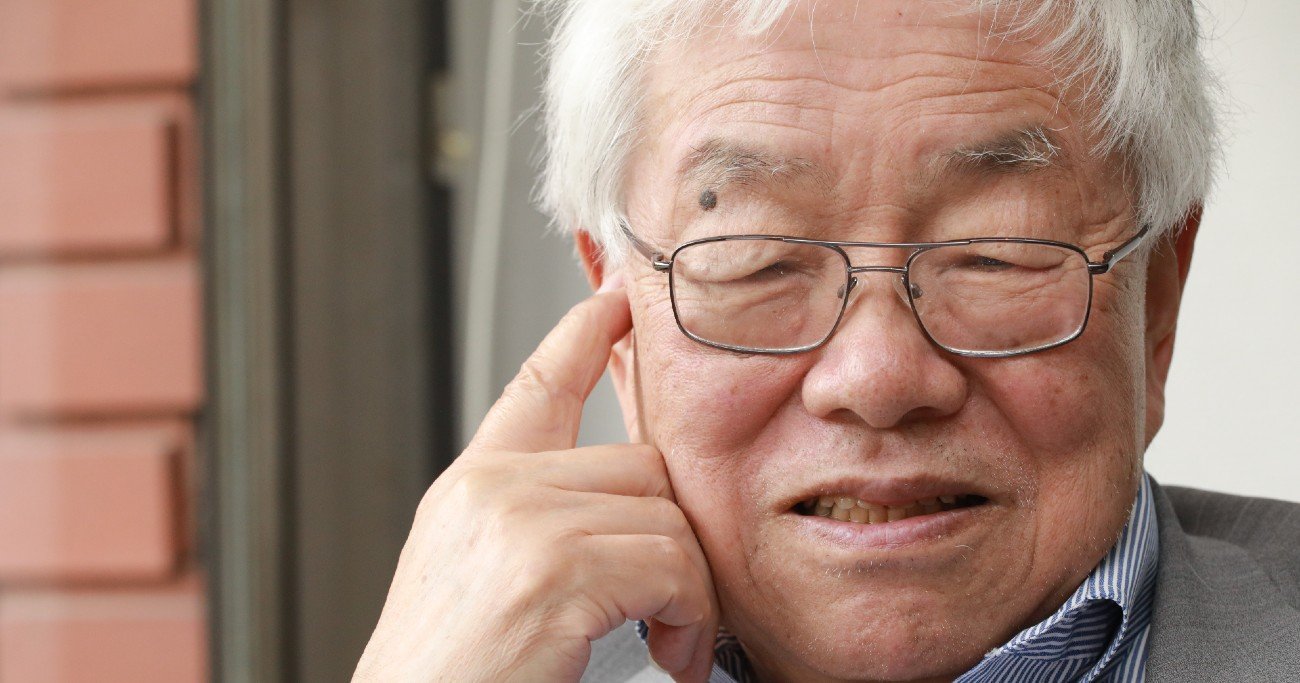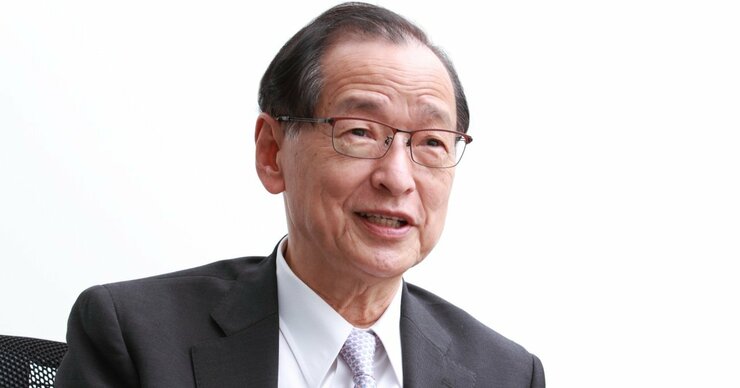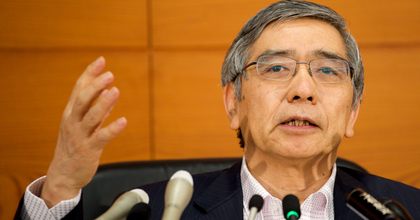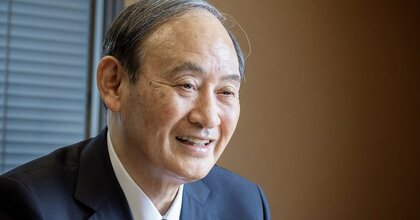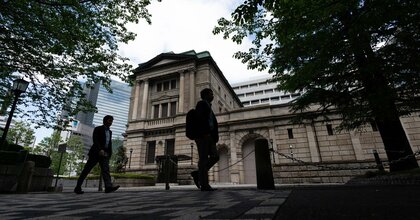Originally published in Japanese on Jul. 14, 2022
Apples and oranges
Should Japan tighten monetary policy after a sustained period of unconventional easing? This was the question posed by the editorial team at Diamond, but the answer could be either “yes” or “no” depending on future conditions. However, the main answer is “no” for the following reasons.
The most important thing to remember in considering this is that in a floating exchange rate system, a country’s monetary policy should depend solely on domestic economic conditions. Japan still has a deflationary gap of 3.6% and price increases have been modest compared to those in other countries, so inflation there will not be severe. If one holds such a view, unconventional easing should continue.
On the other hand, if inflation is likely to pick up on account of soaring energy prices and supply chain disruptions because of the pandemic, as is the case in the U.S., the Bank of Japan (BOJ) should tighten policy while monitoring the situation in Japan.
There are two channels by which monetary policy affects the macroeconomy: interest rates and the money supply.
Among those who consider interest rates alone, many researchers and practitioners felt strongly that the expansionary effect of monetary policy would diminish as interest rates approached zero. Because monetary policy would not function at zero interest rates, it was thought that more government spending would be necessary to grow the economy. However, this line of thought was not accurate.
Expansionary monetary policy depreciates the exchange rate, leading the domestic currency to weaken. This increases exports and the country’s total income. However, former BOJ Governor Masaaki Shirakawa was of the opinion that because exchange rates are driven by interest rate differentials, a country’s currency cannot depreciate once the interest rate is fixed at zero. Accordingly, the Mundell-Fleming effect does not function at zero interest rates.
This is the mechanism of the traditional Mundell-Fleming model, a concept that focuses only on interest rate differentials. However, this model is partially outdated.
According to more current international monetary theory, the quantitative expansion of money directly affects exchange rates. Under a floating exchange rate regime, the exchange rate depends on the ratio of the money supply in the two relevant countries.
By analogy, just as the relative prices of apples and oranges depend on the supply of both in the market, the relative price between the dollar and the yen also depends on the relative ratio of dollar and yen assets in the international market. If the quantity of a currency has a direct effect on the exchange rate, then quantitative easing, even at zero interest rates, will lift the economy.
Using this effect to eliminate the yen’s excessive strength through quantitative easing was a major achievement of Abenomics under BOJ Governor Haruhiko Kuroda. Japan had previously followed monetary policy that was too tight for too long.
The yen’s depreciation was particularly notable, and it revived the stagnating Japanese economy, until about 2015. The result was a tightening labor market and rational investment to relieve labor shortages, a phenomenon nearly forgotten by those who lost their 20s to economic malaise. Between the beginning of the Abe administration in 2012 and the start of the COVID-19 pandemic, 5 million new jobs were added to the Japanese economy. University faculty worry less about their students’ employment prospects.
Short-term interest rates, and then long-term ones, went to zero, and when the BOJ’s negative interest rate policy was implemented, it became impossible to control the money supply only through the central bank’s bond-buying operations. When long-term interest rates in most developed countries were near zero, a situation emerged, envisioned by Shirakawa more than seven years prior, where quantitative easing was no longer effective.
In the example of apples and oranges used previously with regards to exchange rates, there is a “Soros chart” named for the famed investor George Soros. Soros once used this relationship to short the British pound, leading some to call him “the man who bankrupted the Bank of England.”
Abenomics worked well while the Soros chart was functioning. However, as zero interest rates became entrenched around the world, it no longer worked sufficiently. That is why fiscal stimulus is now needed in Japan, and why the BOJ introduced yield-curve control.
Furthermore, at this point the COVID-19 pandemic struck. In Japan too, some have warned that the BOJ must return to tighter policy as soon as inflation was on the horizon.
In response to inflation, the U.S. and the U.K. are tightening monetary policy. Looking again to apples and oranges, if the dollar is the apple and the yen is the orange, oranges will become cheaper because apples are in short supply. In other words, the prices of dollar-denominated commodities will rise, and inflation could spill over into Japan.
This thinking tracks with answering “yes” to the question posed at the beginning of this article and acknowledging that Japan’s monetary easing should return slightly from its unconventional levels. For example, the rate of interest on 10-year government bonds might be relaxed to 0.5%. The BOJ should be guarding carefully against inflation — this the “yes” part of the question.
However, the postwar history of the Japanese economy has many examples of the BOJ cutting into prosperity by tightening too soon. We have to “cautiously” guard against inflation, but, at the same time, be clever and optimistic enough to benefit from the high-pressure economy that a reasonably low yen brings to Japan. The logic is as follows:
A national economy is referred to as a high-pressure economy when its currency is weak, it is at full employment and it is experiencing mild inflation. If the relative prices of labor and capital rise continuously in a high-pressure economy, capital investment will expand and the economy will achieve healthy growth.
Unlike a fixed exchange rate system, a floating exchange rate allows each country to control exchange rates and prices by adopting the monetary policy that best suits its own needs. In this sense, the current depreciation of the yen means that Japan is on the verge of escaping deflation, and the idea of maintaining easing so as not to miss this opportunity is fully understandable as long as strong inflation does not occur.
The phrase “cautiously optimistic” has been used often in recent years with regard to the pandemic and international developments. Japan's monetary policy is now at a point where it is necessary to take a careful look at inflation. This is the “cautious” side of things. But, under a certain degree of yen depreciation, the Japanese economy also needs some respite from deflationary pressure. There is still room for optimism about the positive aspects of a weaker yen.
Learning from Abe
When I was involved in Abenomics as a counselor to the Cabinet Secretariat, one of the very few points of disagreement I had with former Prime Minister Shinzo Abe was about wage increases. While Abe said that some mechanism was needed to artificially raise wages by actively encouraging companies to do so, I argued that wages are most efficient when determined by companies at their own discretion.
A previous age of macroeconomics believed that income should be distributed based on the contribution of each factor of production, such as labor and capital, to production. It was a world where technological progress, when it occurred, increased the efficiency of one's work and increased one's pay.
However, as robotization and computerization progress, it is necessary to take steps to ensure that companies actively distribute the income to their workers. I, who had once called for liberal competition in the economy, learned this from former Prime Minister Abe.
Digitization brings many benefits to society. In the U.S. today, automated speech recognition technology has greatly enriched the lives of many people, including those with disabilities. For these cutting-edge technologies to be truly effective, they must have the network effect of being widely used, and government financing will be needed to realize digitization as a social common capital. That is the significance of investing in these areas.
Rather than worrying about Japan’s fiscal balance, or the government's money reserves, in other words, it is much more important that Japan continues to be a country with the infrastructure to generate productivity and the human resources to develop and utilize advanced technology.
Koichi Hamada is professor emeritus at Yale University. He graduated from the University of Tokyo's Faculty of Law in 1958 and from the Faculty of Economics in 1960. He earned a Ph.D. in economics from Yale University in 1965. After working as a professor of economics at the University of Tokyo, he became a professor of economics at Yale University in 1986. From 2001 to 2003, he served as the head of the Economic and Social Research Institute in the Cabinet Office. He served as counselor to the Cabinet Secretariat during the Abe administration from 2012 to 2020 and was one of the leading figures involved with Abenomics. In his research, he has received international attention for his application of game theory to international finance theory. He has criticized the Bank of Japan's monetary policy, arguing that the failure of monetary policy was a major factor in Japan's post-bubble economic stagnation.

